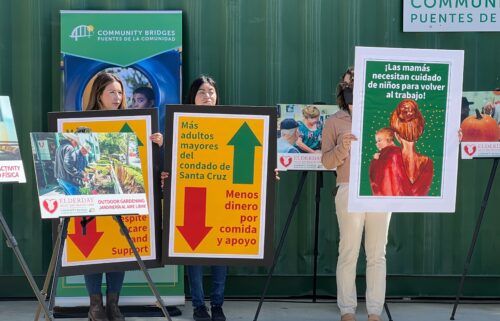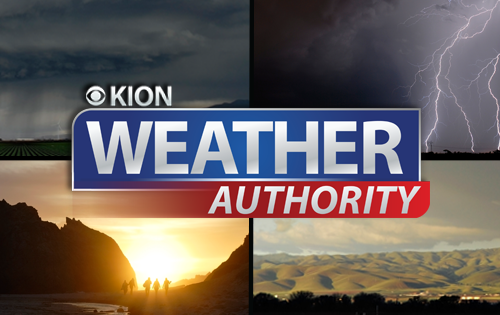Tropical storm warnings issued for more of Florida, Cuba, Bahamas
By Judson Jones, CNN Meteorologist
Before hitting Florida on Saturday, a broad swath of showers and thunderstorms over the Yucatán Peninsula could turn into Tropical Storm Alex or a tropical depression, the National Hurricane Center said.
Tropical storm warnings are in effect Friday for over 10 million people in the southern half of Florida, Cuba and the Bahamas.
Potential Tropical Cyclone 1 is producing sustained tropical storm-force winds of 40 mph with stronger gusts, data from the Air Force Reserve Hurricane Hunters indicates.
“The system is expected to develop a well-defined center and become a tropical storm later today, and some slight strengthening is possible while it approaches Florida” on Friday and Friday night, the hurricane center said.
A tropical storm warning is in effect Friday morning for Miami, Sarasota, the Florida Keys, West Palm Beach, Melbourne, Dry Tortuga, Florida Bay and Lake Okeechobee, as well as along Florida’s west coast, south of the middle of Longboat Key to Englewood, and the state’s east coast, south of the Volusia-Brevard county line to Card Sound Bridge.
Several of those places earlier had been under tropical storm watches.
As of 5 a.m. ET Friday, Potential Tropical Cyclone 1 was 125 miles northwest of Cozumel, with maximum winds of 40 mph as it moved northeast at 6 mph, the hurricane center said Friday in an update.
That puts the storm on track to intensify and become a tropical storm sometime Friday afternoon, with landfall expected in southwest Florida on Saturday morning, forecasters said.
There is a a 90% chance this group of storms will form into a depression or a tropical storm over the next 48 hours, the hurricane center predicted early Thursday afternoon.
For the storm to be christened Alex — the first name of the 2022 Atlantic hurricane season — the system will need to develop a well-defined center, the hurricane center said.
“Whether the storm organizes or not, a significant flood event is possible across south Florida and the Keys,” CNN meteorologist Chad Myers says. “It is too early to say where the heaviest rainfall will be because it isn’t even a storm yet, but models are indicating that 12 to 16 inches of rain are possible in the worst areas.”
“There is still some variability on how this system will track, but heavy precipitation capable of scattered to numerous flash flooding is certainly plausible through southern Florida and into the Keys,” the Weather Prediction Center (WPC) said Thursday morning.
They are forecasting a moderate risk — level 3 of 4 — for excessive rainfall, leading to flash flooding. Deep tropical moisture will surge ahead of the probable storm and over South Florida throughout the day on Friday and into Saturday.
A potential tropical cyclone is a term the hurricane center developed so it can issue watches and warnings for a storm system that is expected to develop as it approaches land. Before this change, watches and warnings couldn’t be issued until a tropical storm actually developed, which limited lead time on critical warnings.
South Florida is most likely in the path
The computer forecast models are beginning to concur that a tropical storm or depression will form and hit southern Florida.
“The latest model guidance is starting to come into some agreement towards this low passing somewhere over the southern portion of the Florida peninsula during the day on Saturday,” the National Weather Service in Miami said Thursday morning.
The path matters because if it takes a more southerly route, this could keep the densely populated areas of South Florida out of the severe threat that comes from the northeast side of tropical storms and hurricanes.
“Gusty winds and an isolated tornado or two will be the main severe threat on Friday and into Saturday,” the weather service in Miami said. “These details remain uncertain as it will depend on the exact track the system takes. A more southern track would place the northeast quadrant over the waters, which would be a better scenario regarding severe weather across South Florida.”
- Sign up for personal weather updates from CNN meteorologists
- Track the path of the storm and compare weather models
- Save this checklist in case a hurricane is approaching your area this season
So, the path matters, even if it is just a tropical storm.
Myers cautions that until hurricane center locates the exact center of this storm, the forecast models will have a hard time accurately predicting the path of this storm.
“A hurricane hunter airplane is heading to the area today and hopefully can find the true center of any circulation,” Myers says.
That information will be used in computer model runs on Thursday evening, giving a better indication of the path and potential strength of the storm.
Wednesday night, without knowing the exact center location of the storm system, the American model had 3 different low-pressure locations at the exact same time, Myers explains. “To me, this indicates that the wind shear in the area may slow the organization of the potential storm and, for now, keep it from growing rapidly.”
2 of 3 ingredients needed for a hurricane
For a hurricane to form, you need “warm ocean water, low wind shear and a cluster of pre-existing storms … we have 2 of the 3 right now,” says Myers.
Wind shear is the change in wind speed and direction as you move up in the sky. If it is strong — like it is right now across the Gulf of Mexico — it makes it difficult for hurricanes to form.
“We have many opposing forces here,” Myers says. “It’s like trying to accelerate your car and not realizing your emergency brake is on.”
If the brake — the wind shear — eases, there is a slim possibility this storm will intensify more than is forecast.
This is the least likely scenario, though.
Another above-average hurricane season forecast
Just last week, the National Oceanic and Atmospheric Administration issued its forecast for this hurricane season.
It is forecasting an above-average year, with 14 to 21 named storms, six to 10 hurricanes and three to six major hurricanes — of Category 3 strength or greater.
There are several contributing factors that play into a “busy” hurricane season.
“We are in an active period,” said NOAA Administrator Rick Spinrad. “There are certain ingredients that drive the intensity and the frequency of hurricanes.”
One is the existing La Niña conditions in the equatorial Pacific.
This phenomenon creates cooler-than-average ocean temperatures around the equator in the Pacific and results in weather impacts around the globe.
La Niña presents favorable conditions for hurricanes in the Atlantic — in contrast to that of El Niño.
Thursday morning, Colorado State University issued an update to its forecast. It now calls for a well-above hurricane season with 20 named storms, 10 hurricanes and 5 major hurricanes.
This is the highest number of named storms CSU has ever forecast for the season in June, Phil Klotzbach, author of the forecast, told CNN. In 2020, the university’s forecast center predicted 19 storms during its June release, but that number included three storms that were named before the season started.
This year, no storms have formed yet.
The-CNN-Wire
™ & © 2022 Cable News Network, Inc., a WarnerMedia Company. All rights reserved.
CNN meteorologist Gene Norman contributed to this report.



